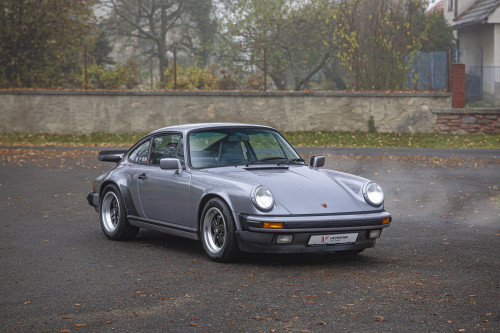In the heart of automotive history lies a legend—a car that not only dominated rally circuits but also captured the imaginations of enthusiasts worldwide. The 1989 Lancia Delta HF Integrale stands as an icon of Italian engineering prowess, combining power, agility, and a fierce competitive spirit. Let's delve into the story of this remarkable machine that left an indelible mark on the rallying world.
Origins of a Champion
The Lancia Delta HF Integrale was not born in a vacuum; it was the culmination of Lancia's successful rallying heritage. Its lineage can be traced back to the early 1980s when Lancia debuted the Delta, a compact family hatchback. But it wasn't until the mid-80s that the HF Integrale variant emerged, designed specifically for Group A rallying.
The 1988 iteration laid the foundation, but it was the 1989 model that truly solidified the Integrale's status. This evolution brought about significant improvements, both in terms of performance and aesthetics, setting the stage for what would become one of the most successful rally cars of all time.
Design and Performance
At first glance, the 1989 Delta HF Integrale strikes a balance between aggression and elegance. Its purposeful stance, widened wheel arches, and distinctive rear spoiler hint at its rallying DNA. Every curve and vent serves a functional role, optimizing aerodynamics and cooling.
Underneath the hood lies the heart of the beast—a 2.0-liter turbocharged inline-four engine. In the 1989 model, this powerplant delivered 185 horsepower, though later evolutions would push this figure even higher. This engine wasn't just about raw power; it was engineered for responsiveness, delivering a surge of torque that propelled the Integrale from 0 to 100 kmh in around 6.6 seconds.
But it wasn't just straight-line speed that defined the Integrale. Its true prowess lay in its handling and traction. The Integrale was one of the first rally cars to feature a sophisticated all-wheel-drive system, combined with a center differential and torque-splitting capabilities. This system, paired with a robust suspension setup, made the Integrale a formidable force on any surface, whether gravel, tarmac, or snow.
Rally Dominance
The true measure of any rally car lies in its performance on the world's most demanding stages, and the 1989 Lancia Delta HF Integrale did not disappoint. Piloted by legendary drivers such as Juha Kankkunen and Miki Biasion, the Integrale clinched back-to-back World Rally Championships in 1989 and 1990. It wasn't just about winning; it was about dominating, often leaving its competitors in the dust.
One of its most famous victories came at the hands of Biasion in the 1989 San Remo Rally. Battling treacherous conditions, Biasion showcased the Integrale's prowess, dancing through the winding roads of the Italian Riviera to claim victory. This triumph, among many others, solidified the Integrale's status as a rallying legend.
Legacy and Collectibility
Today, the 1989 Lancia Delta HF Integrale is more than a relic of rallying's golden era—it's a highly sought-after collector's item. Its scarcity, combined with its legendary status, has elevated its desirability among enthusiasts. Pristine examples command premium prices at auctions, with enthusiasts eager to own a piece of rally history.
But it's not just about nostalgia. The Integrale's influence can still be felt in modern performance cars, particularly those with a rallying heritage. Its advanced all-wheel-drive system and turbocharged powerplant set a benchmark that many manufacturers still aspire to today.
Final Thoughts
In the annals of automotive history, the 1989 Lancia Delta HF Integrale stands tall as a testament to what happens when engineering excellence meets the demands of the rally world. Its victories, its design, and its performance all contribute to a legacy that continues to captivate enthusiasts decades later. Whether tearing through rally stages or gracing the pages of collector's garages, the Integrale remains a symbol of pure, unbridled automotive passion.
This 1989 Lancia Delta HF Integrale 8V (RHD) comes in very nice condition. All fully functional. No rust. Service book, history. Comes with UK registration documents (we can arrange a new EU registration if needed). Originaly, the vehicle was produced as a left hand drive, converted in England in 1989 for the first owner (parts to convert back to LHD included). It was the only car officially sold new as a right hand drive, converted at a Lancia dealership in England.
| First Registration Date | 28.03.1989 |
|---|---|
| Body Type | Hatchback |
| Engine | 1.995 ccm, 188 PS, I4 |
| transmission | Manual |
| Steering | Right Hand Drive |
|---|---|
| Layout | All Wheel Drive |
| Color - exterior | Rosso Red |
| Color - interior | Grey |
| Miles/Kilometers shown | 75.565 mls |
|---|---|
| Chassis / VIN | ZLA831AB000462101 |
| Location - Country | Czechia |
| Location - City | Pisek |
5-door hatchback body type; 4x4 full-time (all-wheel drive permanent, center differential with Ferguson type viscous, 56/44 torque distribiution, torsen self-locking rear differential), manual 5-speed gearbox; gasoline (petrol) engine with displacement: 1995 cm3, advertised power: 137 kW / 185 hp / 188 PS, torque: 304 Nm; characteristic dimensions: outside length: 3900 mm, width: 1700 mm, wheelbase: 2480 mm; reference weights: base curb weight: 1215 kg; top speed: 215 km/h (134 mph) (declared by factory); accelerations: 0-60 mph 6.2 s, 0-100 km/h 6.6 s (declared by factory)

Písek, Czechia

Jablonec nad Nisou, Czechia

Jablonec nad Nisou, Czechia

Písek, CZ

Písek, CZ

Písek, CZ